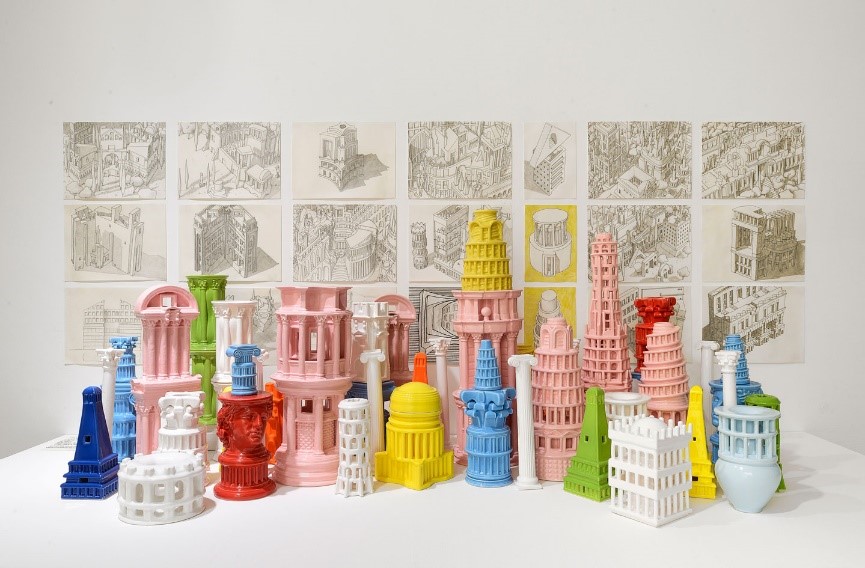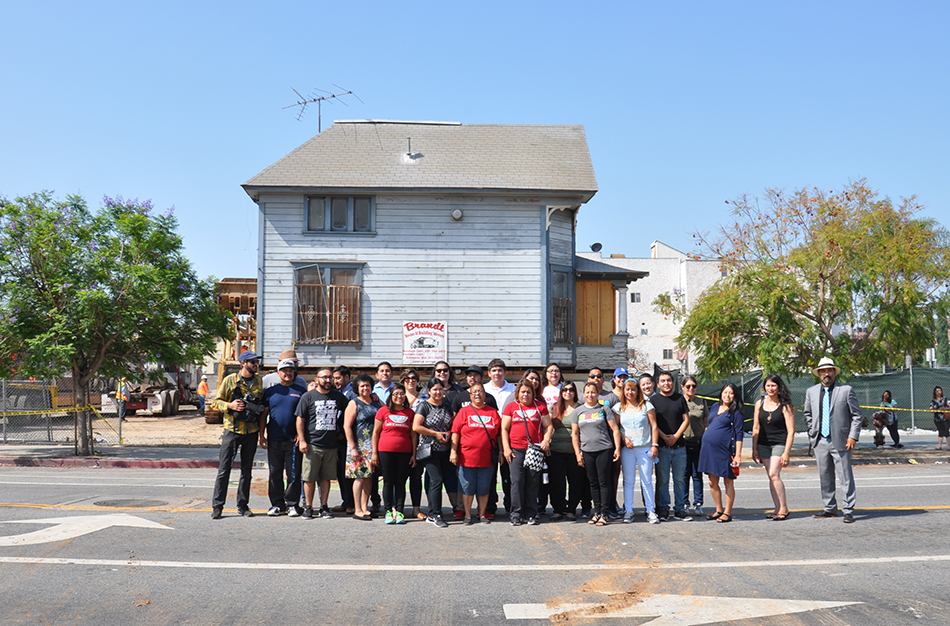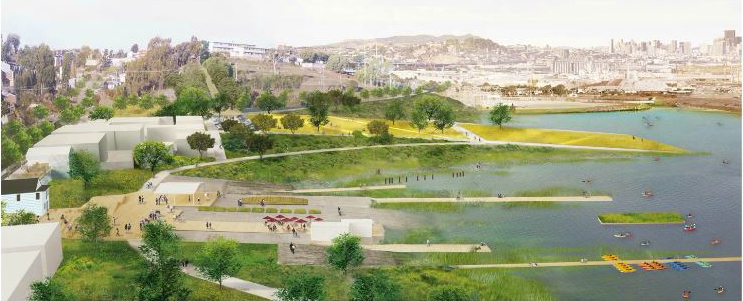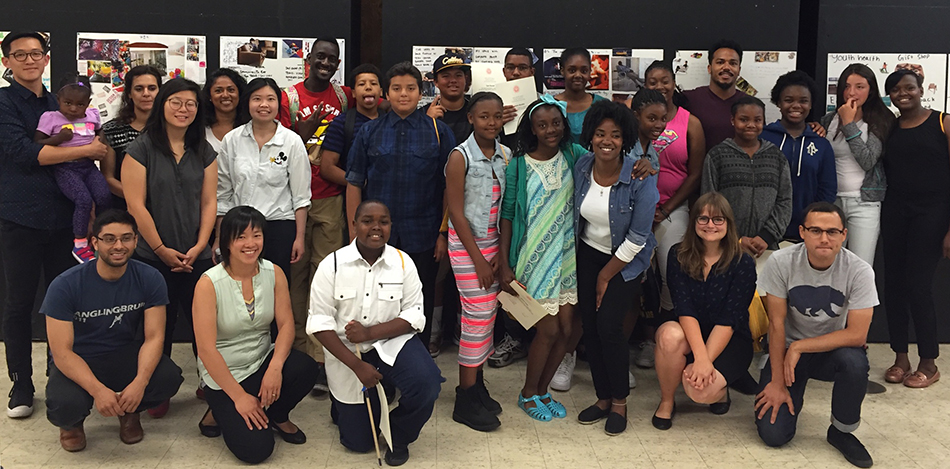The Page
Why I chose Architecture (or how it chose me)
When I was younger I remember walking through the Ferry Building Marketplace with my family and thinking to myself how great it was to see a landmark building adapted into a multiuse space. Standing in the marketplace I was struck by the opening in the floor above, revealing the exposed steel-framed Beaux Arts style architecture which allowed natural light to flow into the space. This experience was one of a few moments that I would have that led me to pursue architecture, and is depicted in one of my very first school projects. Little did I know that a decade later I would be working for the firm that played a key role in the redevelopment of the Ferry Building. Page & Turnbull was not only present in the renovation that happened from 1998 to 2003, but also produced Design Guidelines in 1978 that would be used for future changes. These guidelines showed how Adaptive Reuse could have a positive impact on a neighborhood, reinvigorating a building that once only served a single purpose into something that serves the community in multiple ways. The building immediately became successful after reopening and provided a path for which other Adaptive Reuse projects could follow. We’ve also worked with EHDD on the Exploratorium at Pier 15 in converting a historic pier and warehouse into a public educational museum. Like the Ferry Building, the Exploratorium became successful right after reopening at their new location. We’re also working on renovating the St. Joseph’s Church, converting it from [...]
Color/Colour!
Page & Turnbull Office Salons is a quarterly-ish series of conversations about broad themes in architecture and conservation. Designer Lingxiu Chong shares her thoughts on our most recent Salon about Color held in San Francisco with guest speaker, London-based academic and designer Adam Nathaniel Furman. Enjoy this read about Adam’s research into architectural polychromy and how our work celebrates California’s colorful past, present and future! One of my favorite things about working at Page & Turnbull is that as a multi-disciplinary office, we constantly collaborate and exchange ideas across architectural design, history and conservation. It keeps us curious, open-minded and excited about the work we do in historic environments. The Office Salons came about as a platform for us to expand our conversations about broader, emerging themes we’ve noticed in our cities, throughout California, or the profession in general. One such theme is color. In historic architecture, color is often one of the most transformative and controversial aspects of conserving and adapting buildings for new uses. It is also one of those elusive qualities of a historic building that requires extensive sampling, testing and archival research to pin down. We love thinking and talking about the ‘color’ stories we’ve encountered in our projects. So we were thrilled to have Adam Nathaniel Furman join us during his recent visit to the Bay Area. Adam leads an international research project called Saturated Space, supported by the Architectural Association. Besides championing the cause of bringing color back into in contemporary architecture, Adam and his collaborators [...]
The Historic House that Moved Across the Street
The Peabody Werden Duplex Move On June 30, 2016 the East LA Community Corporation (ELACC) took the next step in its preservation efforts of the ca. 1890 Peabody Werden Duplex in Boyle Heights by relocating it to the other side of the street. The Peabody Werden House is a two-unit, two-story residential property in the Boyle Heights neighborhood of Los Angeles, California. Constructed ca. 1890, the House is one of the oldest and few remaining examples of a turn-of-the-century duplex residential property composed in the Queen Anne style. It was found to be individually eligible for listing on the National Register of Historic Places (National Register) in 2001 as part of a historic resources survey for the Los Angeles Metro Authority’s Los Angeles Eastside Corridor Environmental Impact Report (EIR). Page & Turnbull was hired early on to study the feasibility of relocating the sizable duplex. Though it would be challenging, due to the sheer size of the house, Page & Turnbull concluded that relocation was indeed possible. Page & Turnbull was then further retained to prepare permit drawings to relocate the house to a receiver site across the street. The Duplex was moved intact, following removal of non-contributing additions to the rear of the property. The relocation of the historically significant building was required as part of ELACC’s Cielito Lindo affordable housing development. Future rehabilitation and reuse of the Peabody Werden Duplex will occur as part of a separate development, the Soto Station Joint Development project, which is being developed by ELACC in partnership with [...]
Spotted: An Architectural Historian in his Natural Habitat
All in a day’s work Page & Turnbull architectural historian Jonathon Rusch was captured at India Basin doing what he does best—that is, evaluating a historic vernacular landscape—by Landscape Architecture Magazine. Page & Turnbull has been preparing a series of documents […]
Page & Turnbull at Oakland’s Youth Architecture Camp
In June I was fortunate to be able to take part in the third annual Youth Architecture Camp for underrepresented and at-risk children. The camp was started from a collaboration between the AIA East Bay and Fam First Family Foundation as a way to introduce Architecture and design in general to youth in the East Bay. While I was only able to attend one full day and the final presentations, I was truly taken back by the amount of enthusiasm the kids showed. We were lucky enough to be able to provide this opportunity for them, and without hesitating they took full advantage. […]
Berkeley Public Library featured in NPS Preservation Brief 14
Page & Turnbull served as the Preservation Architect for the rehabilitation, seismic upgrade and new addition to the historic Berkeley Public Library in downtown Berkeley, CA. The new addition’s compatible design has been featured visually (this picture!) in the National Park Service’s Preservation Brief 14: New Exterior Additions to Historic Buildings: Preservation Concerns. […]





